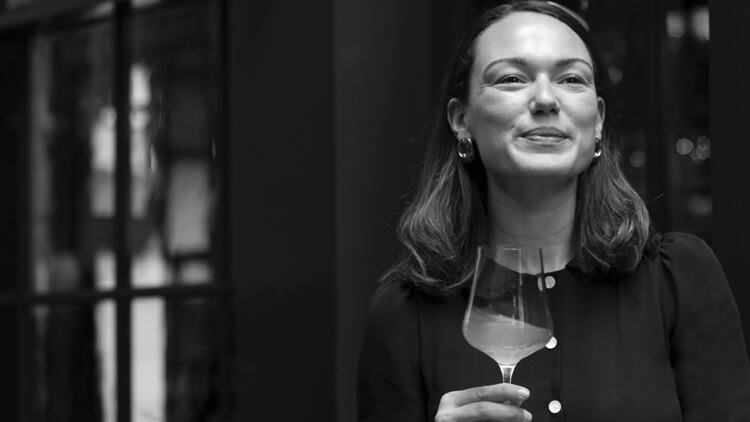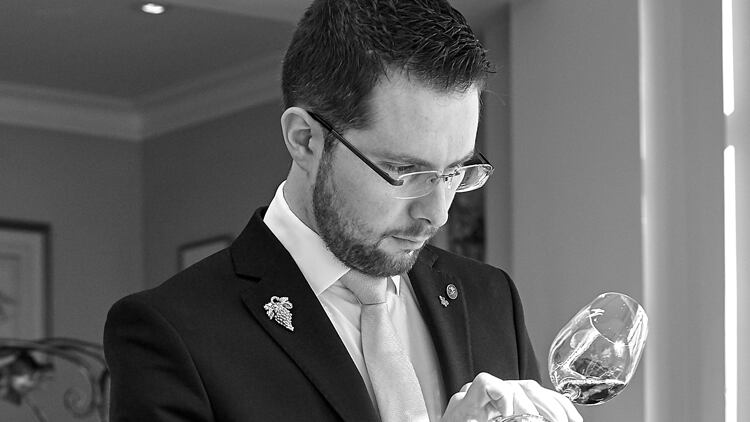Tell us about the moment you first became interested in wine...
I’d love to unfurl some well-rehearsed recital of the time my dad let me have a taste of Domaine Romanée Conti’s ‘La Tache’ when I was six, and voila! The brutal truth is that my love for wine started with pinot grigio on my 18th birthday. My parents aren’t restaurant people, so being at a restaurant with my family and friends to celebrate my birthday was really something at the time. It felt momentous. My dad took charge and ordered a pinot grigio. I clearly remember thinking to myself, ‘this is really delicious; I really like this'. 15 years later, and I still have a bit of a soft spot for the variety.
Tell us about your approach to wine lists
Despite the past year’s challenges, I maintain that I have one of the best jobs in the business. I manage the wine lists for some incredible restaurants, all very different in style. The Palomar, which is Middle Eastern cuisine with big punchy flavours, spices and acidities. We are sculpting the wine list here to be a bit of an ode to Kermit Lynch’s ‘Adventures on the Wine Route’: timeless classics and big hitters from iconic (but artisanal) domaines around the world. Skin-contact wines also work remarkably well with many of the Palomar dishes. The Barbary, which leans somewhat more towards the Moroccan end of Middle Eastern cooking, requires wines that are a little lower in alcohol, have a ‘juiciness’ to them and lean more to the natural side. And then there is The Blue Posts building that has the Blue Posts pub, Evelyn’s Table and The Mulwray. Our head sommelier Sarah does a brilliant job with the Mulwray list, introducing guests to many off-the-beaten-track wines. We must work with 20+ importers just for The Mulwray to get the selection as we want it. At Evelyn’s Table, we have enormous fun with a short but ever-changing curation and really push the boat out when it comes to our pairing. Currently, the pairing includes sake from Peckham, pet-nats, skin contact wine, and even a rice lager. We, of course, reserve some familiar bottles for those that want to play it a bit safer, but guests rarely do. We’ve also just launched a new, progressive wine list for the pub on the ground floor of the building, and guests there can also choose from the 100+ Mulwray list, which is pretty unique for a pub.
Over the course of your career, have you had any wine-related disasters?
When I worked for Sager + Wilde in their early days, I remember knocking over a bottle of Clos Rougeard as I was setting up. I stared at the scene in horror for a good 10 minutes, trying to figure out if I could salvage any of its contents from amongst the shards of glass before I accepted defeat. Every time I get the opportunity to drink a bottle of Clos Rougeard, I feel an enormous twinge of guilt, knowing there’s one less bottle out there, thanks to me.
Name your top three restaurant wine lists
Elkano in Getaria (northern Spain), Ed Thaw’s list at Leroy in London and Ester in Sydney.
Who do you most respect in the wine world?
Where to start? Doug Wregg at Les Caves De Pyrene, Kermit Lynch and Jancis Robinson are luminaries that have helped shape the wine industry into being as progressive as it is today. Also not forgetting contemporaries such as Mike Bennie, Nic Rizzi of Modal Wines, and Christina Rasmussen and Daniela Pillhofer of LittleWine and NOMAD Sommelier Amber Gardner who all are helping to foster a new generation of wine lovers and professionals.
What’s the most interesting wine you’ve ever come across?
I’m lucky in that I come across interesting wines every day in my job; it’s the joy that comes with working with natural wines: they are constantly evolving and contain dimensions and flavours not found in more controlled styles of winemaking. I’ll still never forget when my Champagne producer friend Charles Dufour made a skin-contact Champagne called ‘Honolulu’, which was every part as off-the-wall as it sounds (he never made it again, which was probably for the best).
What are the three most overused tasting notes?
‘Mineral’, ‘juicy’ and ‘confected’. I’ve used two of the three in this interview..
What’s the best value wine on your list at the moment (and why)…
At The Mulwray, when we reach the last few bottles of a wine we know we can’t get more of, we add it to a secret book and add a meagre cash margin. There are some incredible bargains to be found, such as back-vintage Gravner, Dujac and Matassa.
What is your ultimate food and drink match?
My ultimate changes all the time, but there is a dish on at Evelyn’s at the moment with crab in an umami-rich lime leaf broth. We pair it with a Feherburgundhi, a wild Pinot Blanc with distinctive pickled, almost kombucha notes, and the match is joyous and truly memorable.
Old World or New World?
I’m going to say ‘future world’. Which is a global climate that is still inhabitable for vines - not likely for much longer given the current pace of global warming. And then we can talk about ‘old’ and ‘new’.
What is your pet hate when it comes to wine service in other restaurants?
I love and respect wine service, and I love seeing how restaurants do things differently. That said, I advocate fiercely for a world in which sommeliers ditch the ‘pomp’ and meet the guests at their level. An old colleague once said to me, ‘you’re a sommelier; gravity does half your job’. That has never left me.
Who is your favourite producer at the moment, and why?
My favourite producer at the moment actually isn’t a wine producer. He’s a small artisanal distiller called Barney Wilczak making English Eau de Vie in the Cotswolds. It’s an extraordinary project, and there should be more people out there pushing the envelope like he is.
What question do you most get asked by customers?
The main question I get asked as a sommelier is how I’m not a functioning alcoholic. I think it’s hard for people who work outside the restaurant industry to imagine spitting out high-quality wine, but I assure them it’s a necessity.
Which wine-producing region or country is currently underrated at the moment and why?
The whole eastern side of the US has been forever waiting to have its moment, and I wonder if it ever truly will. And as ever places like Slovenia and the Czech Republic, but there are some brilliant importers such as Basket Press Wines who are working hard to raise the profile of these regions in the UK.
It’s your last meal, and you can have a bottle of any wine in the world. What is it, and why?
It would have to be Champagne, I’m afraid. Something racy, saline and mineral such as David L’Eclapart’s L’Apotre and a whole bowl of fresh oysters. What a way to go out!



